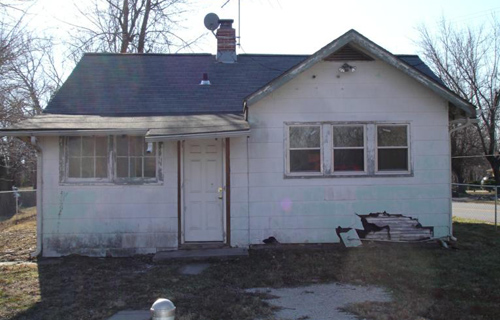Should I Buy a House with Asbestos?

When you decide to buy a house, you must ask this question: will asbestos exposure be a problem? Many older homes - especially those built before the 1980s - were constructed with products that contain asbestos - a toxic mineral known to cause various types of cancer and respiratory problems.
Therefore, when it comes to such houses, prospective buyers may understandably become disinterested. However, if you fully understand the risks and the potential costs, buying a house that you suspect contains asbestos isn't necessarily a bad idea.
Here are some pros to consider when buying a house with asbestos:
- could negotiate a lower price
- asbestos materials pose a low risk if they remain undisturbed and in good condition
To make sure you are fully informed to make the right decision, below we've run through everything you need to know before you buy a house containing asbestos.
Important Things To Keep In Mind When Buying A House With Asbestos
Are you buying a home? Then you should be aware of the potential risks involved with buying a property that was built before 1980. The best way to protect yourself against unwanted asbestos contamination is to evaluate the extent of asbestos, its condition, and develop a plan to manage it.
Steps to assess the level of asbestos in the home:
- inspect the home carefully, and during viewings lookout for the telltale signs of asbestos-containing materials
- ask your real estate agent about the presence of asbestos in the home you consider purchasing
- unless the real estate agent unequivocally states that the property is asbestos-free, professional asbestos testing is worthwhile before buying the home
If asbestos is present in the house you like, you do not have to stop considering buying it. The asbestos-containing products and materials may be in good condition, which means that the risk of asbestos exposure is extremely low or even non-existent.
Nonetheless, you still have to check your state's laws on how to manage asbestos safely. Even though nowadays construction materials contain only up to 1% asbestos, you must make sure that the asbestos-containing materials are undisturbed and correctly installed before buying or renovating a home.
How Can You Tell If There Is Asbestos in the Home You Consider Purchasing?
With its strength and heat-resistance, asbestos was used in a variety of building construction materials, meaning there isn't one area of the home that it is typically in. Instead, it can be found throughout the home - in old floor tiles, ceiling tiles, roof shingles, joint compounds, hot water and steam pipes. Common building materials that contain asbestos and potential locations of asbestos in homes include but are not limited to:
- insulation boards between wall partitions
- white tape on heating ducts
- insulation around boilers, ducts, pipes, wood stoves and fireplaces
- vermiculite insulation
- 9"x9" floor tiles
- acoustic ceiling tiles
- cement products like sidings, gutters, and rainwater pipes
- popcorn ceiling texture
- glues used under flooring
If the building material in question is not damaged or "friable" then the asbestos fibers will not be able to become air-borne particulate. In this case, the asbestos is encapsulated in the building material and will not pose a health hazard to the home occupants. The biggest risk posed by asbestos in buildings is during a renovation. This is when the asbestos-containing materials get damaged and the fibers that are too small to be seen released into the air and inhaled.
Managing the Risk of Asbestos in Your Newly Purchased Home
You have three options when it comes to minimizing the risk of living with asbestos. These include:
- leaving asbestos alone- if the asbestos is in good condition it may be perfectly safe to live with as long as it remains undisturbed
- encapsulation - a process of making existing sources of asbestos safer by treating them with a sealant that forms a protective layer between the material and indoor environment
- removal - if your home has damaged building materials - like crumbling drywall and insulation that is falling apart - the only way to remediate the risk may be complete asbestos removal. For more information, we recommend you read our Asbestos Removal page.
